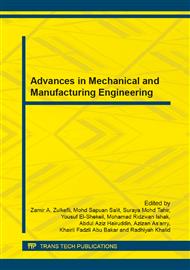p.310
p.315
p.323
p.329
p.335
p.340
p.346
p.350
p.355
Densification Behavior and Hardness Evaluation of Consolidated W-25Cu Composite Powder by Re-Compaction Method
Abstract:
In this work, one stage and two stages compaction technique were used to fabricate the tungsten-copper composite powder. Liquid infiltration technique was used to consolidate the W-Cu green compact and a low concentration iron powder was added as activation material to enhance the sintering behavior. In addition, two-steps compaction process was developed for improving mechanical properties of W-Cu composite as well as segregation of Fe around W grain. The green compact was directly infiltrated at 1250 °C for about 2 hours under vacuum conditions. The microstructure, inter-boundary layer and the contamination levels of the infiltrated compacts were characterized using the scanning electron microscope (SEM) and the energy dispersive X-ray analysis (EDX). Relative sintering density varied in the range of 97.1 to 99.3 % of theoretical density, and it was highly depended on Fe concentration and method of compaction. In contrast to one stage compaction, the experimental results showed that the composites fabricated by the two stages of compact ion had better homogeneous structure, high densification and a clear segregation of inter-boundary layer of Fe-W around W grains.
Info:
Periodical:
Pages:
335-339
Citation:
Online since:
June 2014
Authors:
Price:
Сopyright:
© 2014 Trans Tech Publications Ltd. All Rights Reserved
Share:
Citation:


